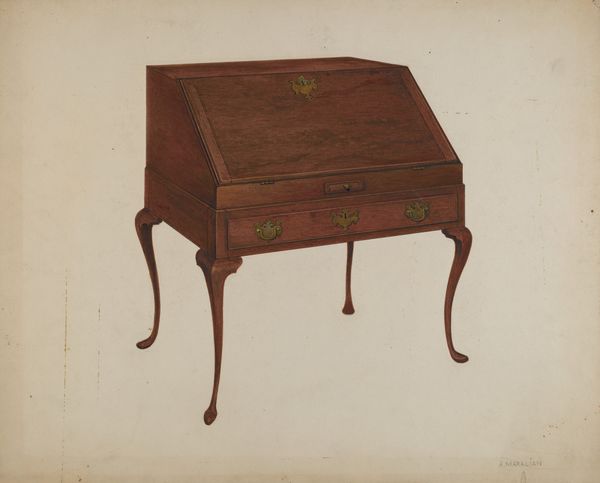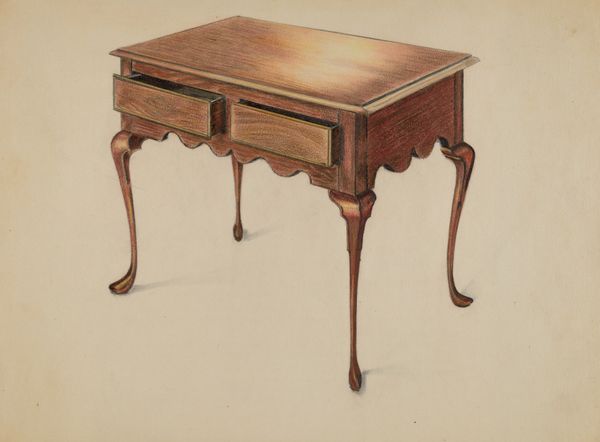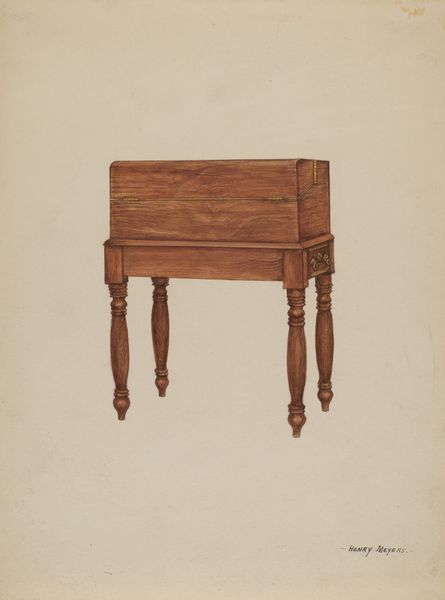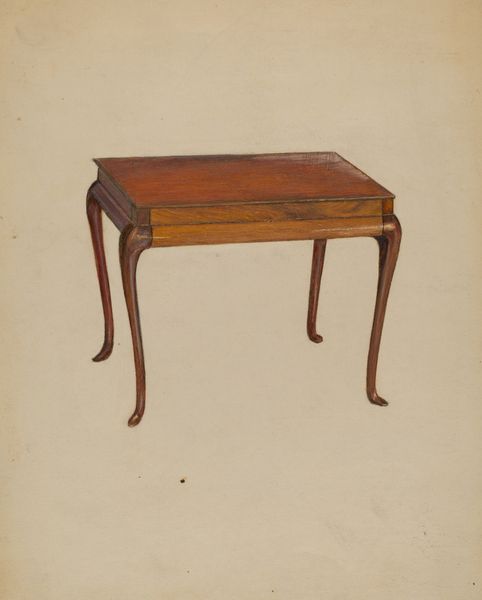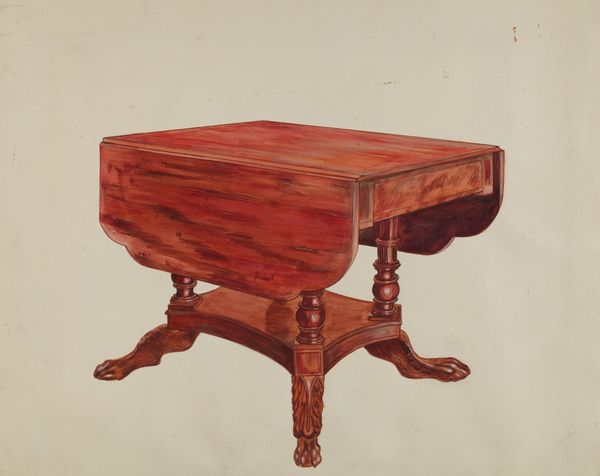
drawing, watercolor
#
drawing
#
oil painting
#
watercolor
#
watercolour illustration
#
genre-painting
#
academic-art
#
watercolor
Dimensions: overall: 26.5 x 24.5 cm (10 7/16 x 9 5/8 in.) Original IAD Object: 59"high; 35"wide; 22"deep
Copyright: National Gallery of Art: CC0 1.0
Editor: Here we have Rex F. Bush’s “Desk,” circa 1936, done in watercolor and drawing. I’m struck by how formally composed it is, and how the rendering elevates what could be an ordinary object. What jumps out at you? Curator: I see this desk as more than just a piece of furniture; it's a loaded symbol. Consider the social context of 1936 – the lingering effects of the Great Depression, rising anxieties about global conflict, and the stratification of American society. What kind of person do you imagine sitting at this desk? Editor: Probably someone affluent, given the desk's elaborate design. Maybe a businessman or a lawyer? Curator: Precisely. And what does that suggest? Power, privilege, perhaps even complicity within a system that perpetuated inequality. Bush, as an artist working during this era, may have been subtly critiquing the elite through his careful depiction of their material possessions. Notice how the hard lines contrast with the more organic decorative flourishes. What might this tension represent? Editor: I guess it highlights the struggle between industrial progress and traditional values. Also maybe how the upper class wanted to distinguish themselves with status symbols and displays of wealth during this period of economic strife. Curator: Yes, consider that the meticulous detail of the wood grain becomes almost oppressive, trapping the user in a cycle of production and consumption. And where is the human figure? Its absence is telling. Editor: I never thought of it that way, but I can see how something as simple as a desk can be interpreted through different socioeconomic lenses. It is much more political than I initially gave it credit for. Curator: Art has the potential to become such a statement when viewed in relation to politics, gender and race.
Comments
No comments
Be the first to comment and join the conversation on the ultimate creative platform.
